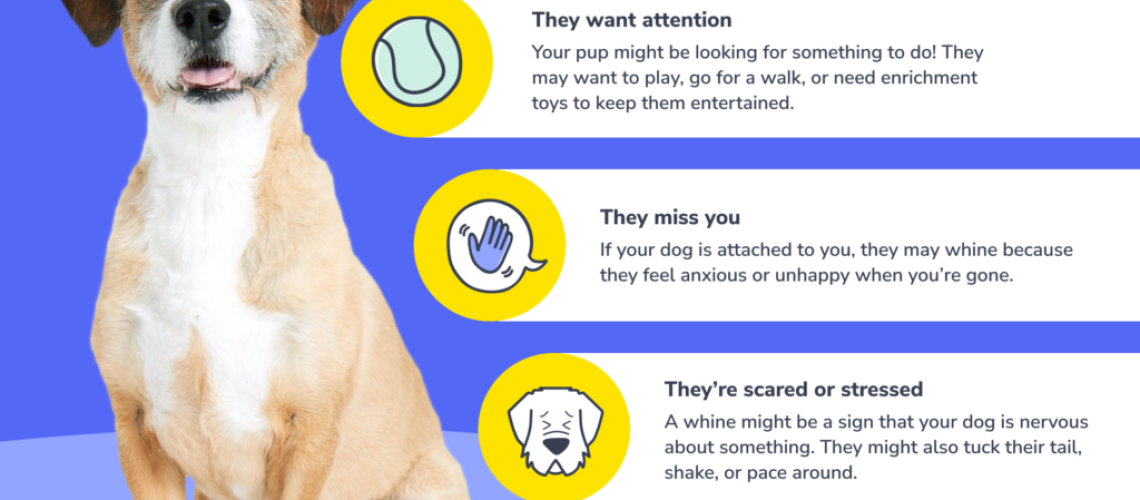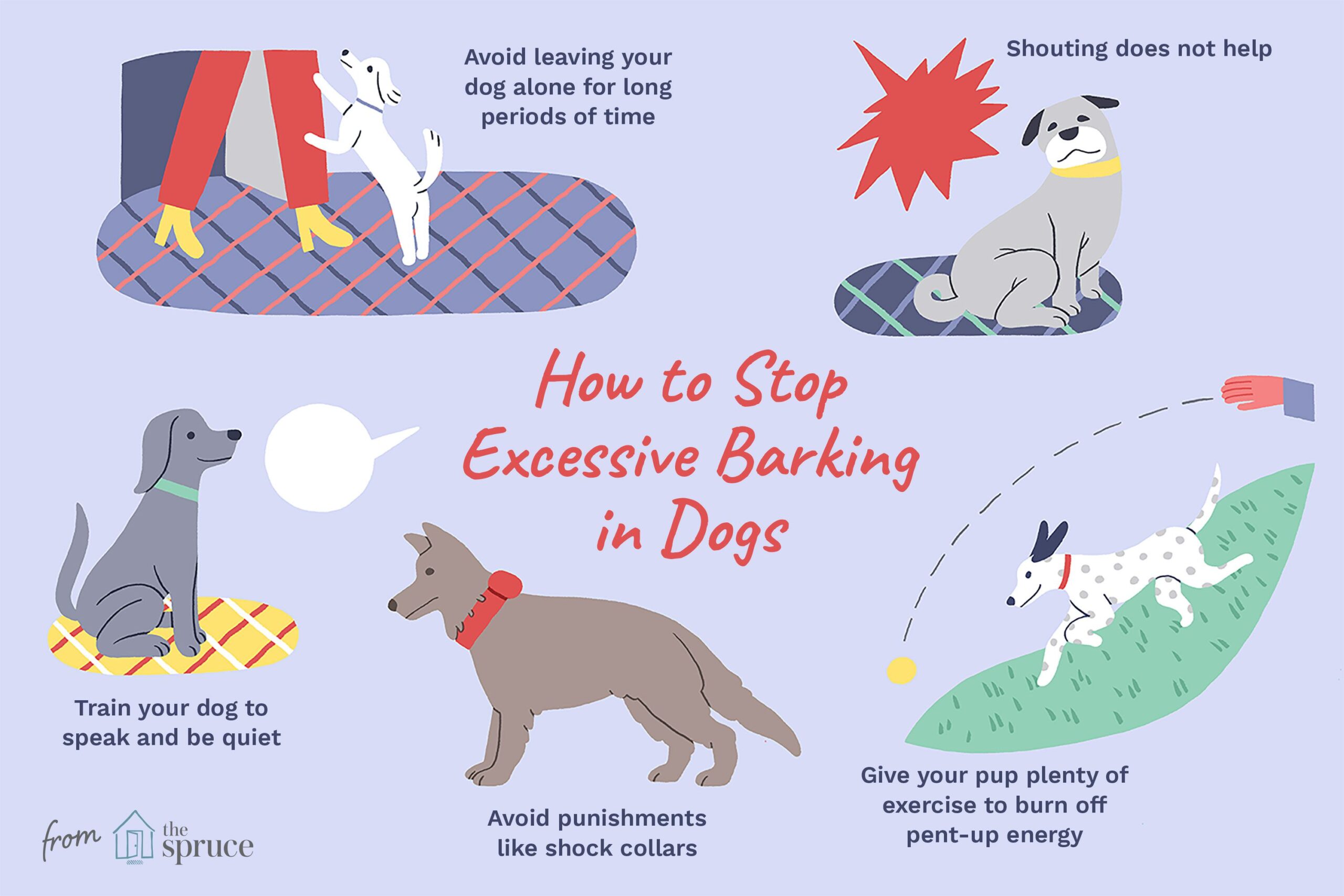Key Takeaways:
- Dogs may whine due to various reasons such as seeking attention, expressing anxiety or fear, or experiencing pain.
- Understanding the underlying cause of your dog's whining is crucial in addressing the behavior effectively.
- Providing regular exercise, mental stimulation, and social interaction can help alleviate excessive whining in dogs.
- Consistency and positive reinforcement training techniques are essential in teaching your dog alternative behaviors instead of whining.
- If your dog's whining persists despite your efforts, it is advisable to consult a veterinarian or professional dog trainer for further guidance and assistance.
Are you tired of your furry friend constantly whining and you have no idea why? Well, fret not! Understanding the reasons behind your dog's whining can lead to a happier and healthier relationship between you and your pet. In this article, we will explore the various reasons why dogs whine and provide effective strategies to stop it. By delving into this subject, you'll gain valuable insights into your dog's behavior, ensuring a more peaceful and harmonious household. So, let's dive in and put an end to those incessant whines once and for all!
Why does my dog whine?
Common reasons why dogs whine
Dogs may whine for various reasons, and it's important to understand what could be causing their behavior. Some common reasons why dogs whine include:
- Hunger or thirst: If your dog is hungry or thirsty, they may whine to let you know that they need food or water.
- Pain or discomfort: Dogs may whine if they are in pain or feeling uncomfortable. This could be due to an injury, illness, or other physical issues.
- Anxiety or fear: Dogs may whine when they feel anxious or scared. This could be triggered by loud noises, unfamiliar environments, separation from their owner, or other stressful situations.
Determining if your dog's whining is due to a medical issue
If your dog is excessively whining, it's important to rule out any potential medical issues that could be causing their behavior. Some signs that your dog's whining may be due to a medical issue include:
- Changes in appetite or drinking habits
- Lethargy or lack of energy
- Vomiting or diarrhea
- Difficulty walking or limping
Situations and emotions that make dogs more likely to whine
Situations that make dogs more likely to whine
Dogs are more likely to whine in certain situations that trigger their natural instincts and emotions. Some situations that can make dogs more likely to whine include:
- Being left alone: Dogs are social animals and may whine when they are left alone for long periods of time.
- Being in a new environment: Dogs may whine when they are in unfamiliar surroundings, such as a new home or when traveling.
- Feeling bored or understimulated: Dogs may whine if they are not getting enough mental and physical stimulation, leading to boredom.
Emotions that make dogs more likely to whine
Dogs have emotions just like humans, and certain emotions can trigger their whining behavior. Some emotions that can make dogs more likely to whine include:
- Fear or anxiety: Dogs may whine when they feel scared or anxious about something.
- Frustration: If a dog is unable to access something they want, they may whine out of frustration.
- Excitement: Dogs may also whine when they are overly excited, such as when anticipating playtime or going for a walk.
Effective strategies to stop excessive dog whining
Identify the cause of the whining
In order to effectively stop your dog's excessive whining, it's important to identify the underlying cause. Observe your dog's behavior and try to determine what triggers their whining. Once you understand the cause, you can work on addressing it directly.
Provide appropriate outlets for your dog's needs
Dogs often communicate their needs through whining. Make sure your dog's basic needs are met by providing them with food, water, regular exercise, and mental stimulation. This can help reduce any underlying causes of their whining behavior.
Training your dog to communicate needs without excessive whining
Teach alternative behaviors
Instead of allowing your dog to whine to get what they want, teach them alternative behaviors that are more acceptable. For example, you can train your dog to sit or paw at the door when they need to go outside instead of whining.
Use positive reinforcement
Reward your dog with treats, praise, and affection when they exhibit the desired behavior instead of whining. This will reinforce the idea that they can communicate their needs without excessive whining.
Tips and resources for addressing your dog's whining behavior
Consult with a veterinarian or professional trainer
If your dog's whining persists or is causing significant distress, it may be helpful to seek guidance from a veterinarian or professional dog trainer. They can provide personalized advice and strategies tailored to your dog's specific needs.
Patience and consistency are key
Addressing and modifying your dog's whining behavior takes time and consistency. Be patient with your furry friend as you work on training them to communicate their needs in a more appropriate manner.
Overall, understanding why dogs whine and implementing effective strategies can help reduce excessive whining and improve the overall well-being of your canine companion.
Training your dog to communicate needs without excessive whining
Understanding the reasons behind your dog's whining
When it comes to training your dog to communicate their needs without excessive whining, it is important to first understand why they engage in this behavior. Dogs may whine for various reasons, such as seeking attention, expressing anxiety or fear, indicating discomfort or pain, or simply trying to communicate their desires. By identifying the underlying cause of your dog's whining, you can better address the issue and find effective solutions.
Identifying triggers for your dog's whining
To effectively train your dog to communicate their needs without excessive whining, it is crucial to identify the triggers that lead to this behavior. Observe when and in what situations your dog tends to whine the most. Is it during mealtime, when they need to go outside, or when they want to play? Understanding these triggers will help you develop a targeted training plan tailored specifically to your dog's needs.
Here are some tips and resources that can assist you in addressing your dog's whining behavior:
1. Positive reinforcement: Use rewards such as treats and praise when your dog exhibits calm behavior instead of whining. This will encourage them to associate good behavior with positive outcomes.
2. Ignore attention-seeking behaviors: If your dog is whining for attention, avoid giving in immediately. Instead, wait until they have calmed down before providing any form of interaction or reward.
3. Create a comfortable environment: Ensure that your dog has a cozy and safe space where they can relax and feel secure. Provide them with toys, blankets, and a designated area where they can retreat when feeling anxious or stressed.
4. Consult a professional trainer: If you are struggling with training on your own or if the whining persists despite consistent efforts, consider seeking guidance from a professional dog trainer. They can provide personalized advice and techniques to address the specific needs of your dog.
Remember, training takes time and patience. Consistency is key, so make sure to establish clear boundaries and reinforce positive behaviors consistently. By understanding the reasons behind your dog's whining and implementing effective training strategies, you can help them communicate their needs in a more appropriate manner.
Understanding the reasons behind your dog's whining
Identifying physical discomfort
When your dog whines, it could be a sign of physical discomfort. Dogs may whine if they are in pain or feeling unwell. It is important to pay attention to any other accompanying symptoms such as limping, loss of appetite, or changes in behavior. If you suspect that your dog's whining is due to physical discomfort, it is best to consult with a veterinarian who can provide the necessary medical attention.
Recognizing emotional distress
Whining can also be an expression of emotional distress in dogs. They may whine when they feel anxious, scared, or lonely. Dogs are social animals and thrive on companionship and attention from their owners. If your dog is experiencing separation anxiety or feeling neglected, their whining behavior may be a cry for help. Providing them with reassurance, engaging in interactive playtime, and ensuring they have a comfortable environment can help alleviate their emotional distress.
Addressing your dog's whining behavior
Establishing a routine
Creating a consistent daily routine for your dog can help reduce their whining behavior. Dogs thrive on predictability and structure. Set specific times for feeding, exercise, playtime, and rest. By establishing a routine, you are providing your dog with a sense of security and stability which can minimize their need to seek attention through excessive whining.
Positive reinforcement training
Using positive reinforcement techniques can effectively address your dog's whining behavior. When your dog remains calm and quiet instead of whining, reward them with treats or praise. This reinforces the desired behavior and encourages them to repeat it in the future. Avoid scolding or punishing your dog for whining as this may increase their anxiety levels and worsen the behavior.
Providing mental and physical stimulation
Boredom can often be a trigger for whining in dogs. Ensuring your dog receives enough mental and physical stimulation throughout the day can help alleviate their restlessness and reduce whining. Engage in interactive games, provide puzzle toys, or take them for regular walks to keep their minds occupied and their energy levels balanced.
Additional resources for addressing your dog's whining behavior
Professional dog training classes
Enrolling your dog in professional training classes can be beneficial in addressing whining behavior. Trained instructors can guide you on effective techniques to modify your dog's behavior and provide personalized advice based on your specific situation. These classes also offer opportunities for socialization with other dogs, which can help reduce anxiety and improve overall behavior.
Consulting with a professional animal behaviorist
If your dog's whining persists despite your efforts, consulting with a professional animal behaviorist may be necessary. These experts specialize in understanding animal behavior and can conduct a thorough assessment of your dog's needs. They will develop a customized plan to address the underlying causes of the whining and provide guidance on how to modify the behavior effectively.
Remember, each dog is unique, so it may take time and patience to find the most suitable approach for addressing their whining behavior. With consistency, positive reinforcement, and understanding their needs, you can help your furry friend become happier and more content.
In conclusion, dogs may whine for various reasons such as seeking attention, expressing anxiety or discomfort, or wanting something. By understanding their needs and providing proper training and care, we can help reduce their whining behavior and ensure a happier and healthier relationship with our furry friends.
How do I stop my dog from whining for no reason?
To communicate to your dog that their attention-seeking whining is ineffective, use strong body language like turning away or crossing your arms. Completely ignore the dog during this time. Along with not reinforcing the whining behavior, it is important to reward the dog when they are quiet.
Why is my dog whining all the time?
Dogs whine because they desire attention. This is often the most frequent reason when asked, "Why does my dog keep whining?" Similar to young children crying to get their parents' attention, dogs may whine to seek increased interaction and engagement.
Will dog grow out of whining?
As the puppies grow and gain independence, their crying and whining gradually decreases over the following weeks.
Why is my dog whimpering and whining so much?
Dogs whine for various reasons, but the most common ones include appeasement, greeting, seeking attention, anxiety, and being in pain or injured.
Why is my dog whining so much and acting weird?
Your pet may communicate their need to go to the bathroom or express emotions such as fear, anxiety, frustration, boredom, excitement, or pain through whining. Whining is a reflection of the emotional state of your four-legged friend.
How long does it take a dog to stop whining?
Typically, dogs or puppies will calm down and cease crying or barking within thirty minutes after being left alone.

















